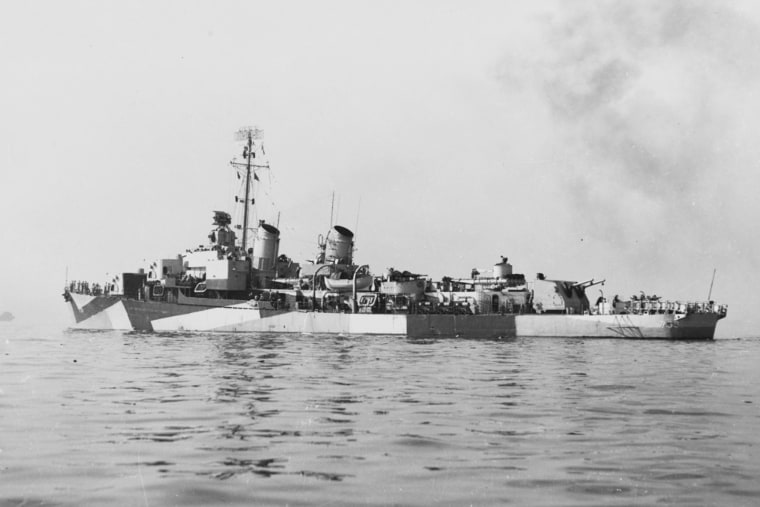Wreckage from a U.S. Navy destroyer sunk by a kamikaze aircraft attack during World War II has been discovered by a team of underwater explorers in the Pacific Ocean.
The USS Mannert L. Abele was operating off the northern coast of the Japanese island of Okinawa on April 12, 1945, when it suddenly found itself "surrounded by hostile planes,” the Naval History and Heritage Command said in a news release this week, as it announced the ship had been identified Thursday.
After the Sumner-class destroyer engaged with and damaged multiple enemy aircraft, a plane managed to crash next to it, penetrating its side, the command said, adding that a minute later it was “at the waterline by a Yokosuka MXY-7 Ohka.”
Known as the “Cherry Blossom,” the Ohka was a rocket-powered human-guided bomb “and the resulting explosion caused the ship’s bow and stern to buckle rapidly,” the release said, adding that it became the first U.S. warship sunk by the weapon which was identified as “one of the first cruise missiles,” and fired up to 425 mph.
Along with four fighter aircraft, inshore Fire Support ships fought further enemy attacks and began rescuing the Abele's survivors. However, 84 sailors were lost at sea.
The ship’s discovery “allows some closure to the families of those lost, and provides us all another opportunity to remember and honor them,” said command Director Samuel J. Cox, a retired U.S. Navy rear admiral.

The ship was found in December by a group called the Lost 52 Project, which searches for Navy submarines and warships sunk during World War II.
The Lost 52 Project said in a statement on its website that the ship was providing support for Operation Iceberg, the codename for the Battle of Okinawa.
It added that the death of President Franklin D. Roosevelt on the same day “overshadowed,” the sinking. Five weeks later, America dropped atomic bombs on the Japanese cities of Hiroshima and Nagasaki.
Tim Taylor, the leader of the Lost 52 Project, said in the statement that the discovery was "very emotive" for him because his father had come "close to the same fate" when his ship, the USS Telfair, was hit by a kamikaze attack.
The command said it had established the Abele as “U.S. sunken military craft protected by U.S. law and under the jurisdiction of the Department of the Navy,” and as a war grave of sailors respected by all.
Discovery expeditions continue to seek U.S. Navy vessels lost during World War II. Submarine USS Albacore was identified by the command near the coast of Hokkaido in February.
